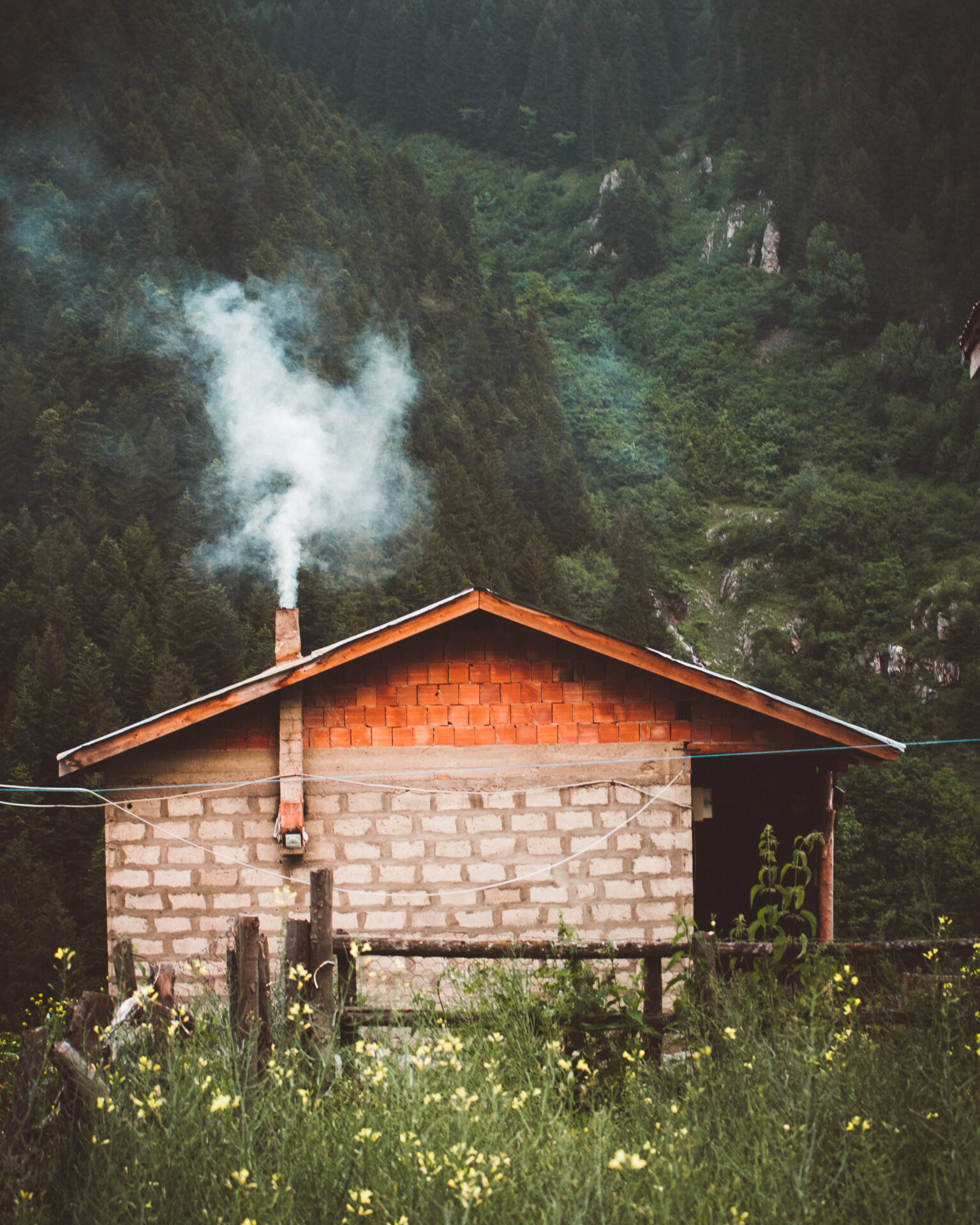As the tiny home movement continues to gain momentum, ensuring a healthy and comfortable living environment is paramount. One crucial aspect often overlooked when designing a sustainable tiny home is proper ventilation. In this comprehensive article, we delve into the importance of maintaining optimal air quality and how to achieve it through effective ventilation strategies. We will explore the various options available, the science behind them, and the most efficient techniques for implementation. By the end, you will be well-equipped with the knowledge and tools necessary to create a safe and comfortable atmosphere within your tiny home, ultimately contributing to the overall sustainability and longevity of your living space.
The Importance of Proper Ventilation in Tiny Homes for Healthy Living
Maintaining good air quality is essential for any living space, but it becomes even more critical when dealing with tiny homes. Due to their compact size, tiny houses are more susceptible to air quality issues, which can lead to health concerns and discomfort for occupants. In this section, we will discuss the significance of proper ventilation in tiny homes, focusing on three key areas: the control of indoor pollutants, the regulation of temperature and humidity, and the prevention of mold and mildew growth.
Control of Indoor Pollutants
In a tiny home, indoor pollutants can accumulate quickly due to the limited space and reduced air circulation. Common pollutants include volatile organic compounds (VOCs) from building materials, furniture, and cleaning products, as well as allergens like dust mites and pet dander. Proper ventilation effectively dilutes and removes these harmful particles, ensuring a healthier living environment for the occupants.
Regulation of Temperature and Humidity
Ventilation plays a crucial role in maintaining a comfortable temperature and humidity level inside a tiny home. By promoting air circulation, it helps to alleviate hot and cold spots, as well as preventing excessive moisture buildup. This not only improves the overall comfort of the living space but also contributes to energy efficiency by reducing the need for heating and cooling systems.
Prevention of Mold and Mildew Growth
Mold and mildew thrive in damp, poorly ventilated environments, making tiny homes particularly vulnerable to their growth. These fungi can cause various health issues, from allergies and asthma to more severe respiratory problems. Ensuring proper ventilation helps to reduce the risk of mold and mildew growth by controlling moisture levels and promoting air circulation, thus creating a healthier living space for occupants.
In summary, proper ventilation is crucial for maintaining a healthy and comfortable tiny home. By effectively controlling indoor pollutants, regulating temperature and humidity, and preventing mold and mildew growth, occupants can enjoy a sustainable and pleasant living environment.
Top Tiny Home Ventilation Systems: Comparing Natural and Mechanical Solutions
When it comes to maintaining optimal air quality in your tiny home, choosing the right ventilation system is crucial. In this section, we will compare the two primary categories of ventilation solutions: natural and mechanical systems. We will examine the advantages and drawbacks of each type, along with some popular examples, to help you make an informed decision for your tiny home.
Natural Ventilation: Harnessing the Power of Nature
Natural ventilation relies on the inherent properties of air, such as pressure differences and wind, to promote air circulation without the need for mechanical devices. This eco-friendly approach offers several advantages, such as lower energy consumption, reduced maintenance, and a smaller carbon footprint. Some common examples of natural ventilation strategies include:
1. Cross ventilation: By strategically placing windows and doors on opposite sides of the tiny home, cross ventilation allows fresh air to flow in and stale air to flow out, creating a comfortable and healthy living environment.
2. Stack ventilation: Taking advantage of the fact that hot air rises, stack ventilation relies on high windows, vents, or skylights to release warm air and draw in cooler air from below.
While natural ventilation is an energy-efficient and environmentally friendly option, it may not always provide adequate airflow in certain climates or during extreme weather conditions. Additionally, it may not be as effective at removing pollutants and moisture as mechanical systems.
Mechanical Ventilation: Engineered Solutions for Improved Air Quality
Mechanical ventilation systems utilize fans, ducts, and other devices to actively circulate air within a tiny home. These systems offer greater control over indoor air quality and can be customized to suit individual needs and preferences. Some popular mechanical ventilation options for tiny homes include:
1. Exhaust-only systems: These systems use fans to expel stale air from the tiny home, creating negative pressure that draws in fresh air through passive vents or windows. Exhaust-only systems are relatively inexpensive and easy to install, making them an attractive option for many tiny home owners.
2. Supply-only systems: Supply-only systems work by actively forcing fresh outdoor air into the tiny home while relying on natural leakage or passive vents for exhaust. They can be equipped with filters to remove outdoor pollutants and allergens, making them ideal for those with respiratory sensitivities.
3. Heat recovery ventilators (HRVs) and energy recovery ventilators (ERVs): These advanced systems combine the functions of exhaust and supply systems while also transferring heat (HRVs) or both heat and moisture (ERVs) between incoming and outgoing air. This helps to maintain comfortable temperature and humidity levels while minimizing energy consumption.
Mechanical ventilation systems offer more consistent and reliable airflow compared to natural solutions, but they also require a greater initial investment, ongoing maintenance, and increased energy usage.
To determine the best ventilation system for your tiny home, it’s essential to consider factors such as your local climate, budget, and specific air quality needs. By weighing the benefits and drawbacks of both natural and mechanical solutions, you can select the right approach that will contribute to a healthier and more comfortable living environment.
The Role of Windows and Skylights in Promoting Tiny Home Air Circulation
Incorporating windows and skylights into the design of your tiny home can significantly improve air circulation and overall indoor air quality. These features not only provide natural light and ventilation but also contribute to energy efficiency and a greater connection with the outdoors. In this subsection, we will explore the impact of windows and skylights on air circulation in tiny homes and discuss some effective strategies for their implementation.
Maximizing Natural Ventilation with Strategically-Placed Windows
The layout and placement of windows in a tiny home play a crucial role in promoting natural ventilation. By positioning windows on opposite sides of the home or in areas where natural breezes flow, you can create a cross-ventilation effect that encourages fresh air to enter and stale air to exit. Additionally, consider incorporating windows that can be opened in various ways, such as casement, awning, or double-hung styles, to allow for greater flexibility in airflow control.
Utilizing Skylights for Stack Ventilation and Enhanced Daylight
Skylights offer a unique opportunity to improve air circulation in a tiny home while also increasing natural light. By placing skylights in strategic locations, such as near the top of a loft or high on a wall, they can facilitate stack ventilation. This effect occurs as warm air rises and escapes through the skylight, drawing in cooler air from below. Furthermore, skylights can contribute to energy efficiency by reducing the need for artificial lighting during daylight hours.
Optimizing Window and Skylight Performance with Energy-Efficient Features
When selecting windows and skylights for your tiny home, it’s essential to consider their energy efficiency and performance. Look for features such as double or triple glazing, low-emissivity (Low-E) coatings, and insulated frames to minimize heat transfer and maintain a comfortable indoor temperature. Additionally, consider incorporating shading devices like blinds, curtains, or external shades to manage solar heat gain and prevent overheating during warmer months.
Smart Tech Solutions for Enhanced Ventilation Control
Incorporating smart technology into your tiny home’s window and skylight systems can provide greater control over ventilation and indoor air quality. For example, automated window openers can be programmed to open and close based on indoor temperature, humidity, or air quality sensors, ensuring optimal air circulation without constant manual adjustments. Similarly, smart skylights with rain sensors can automatically close when precipitation is detected, preventing water damage and maintaining a comfortable indoor environment.
By thoughtfully integrating windows and skylights into your tiny home design, you can significantly enhance air circulation and create a healthier, more comfortable living space. Consider factors such as window placement, skylight positioning, energy-efficient features, and smart technology to optimize your tiny home’s ventilation and overall indoor air quality.
Preventing Mold and Mildew: Tips for Maintaining Humidity Levels in Small Spaces
One of the challenges that many tiny home owners face is the increased risk of mold and mildew growth due to the compact nature of their living space. Mold and mildew not only cause unpleasant odors and unsightly stains, but they can also lead to various health issues, including allergies and respiratory problems. In this section, we will discuss some practical tips and strategies for maintaining optimal humidity levels in your tiny home, effectively preventing the growth of mold and mildew.
Monitor Humidity Levels with Hygrometers
The first step in preventing mold and mildew growth is to regularly monitor the humidity levels in your tiny home. Using a hygrometer, a device that measures relative humidity, can help keep track of moisture levels and identify any problem areas. Ideally, the humidity inside your tiny home should be maintained between 30% and 50% to create a comfortable living environment and discourage mold growth.
Utilize Proper Ventilation Techniques
As discussed earlier in this article, proper ventilation plays a crucial role in maintaining indoor air quality and preventing mold and mildew growth. Ensure that your tiny home is equipped with an effective ventilation system, whether natural or mechanical, to promote air circulation and regulate humidity levels. Additionally, be mindful of daily activities that produce moisture, such as cooking or taking a hot shower, and ensure adequate ventilation during these times to minimize humidity buildup.
Invest in a Dehumidifier for High Humidity Areas
In regions with consistently high humidity or during particularly damp seasons, using a dehumidifier can help maintain a healthy moisture level within your tiny home. Dehumidifiers remove excess moisture from the air, reducing the risk of mold and mildew growth. There are various sizes and types of dehumidifiers available, so choose one that suits your specific needs and space requirements.
Implement Moisture-Absorbing Materials and Solutions
Incorporating moisture-absorbing materials and solutions can further help in maintaining optimal humidity levels in your tiny home. These may include:
1. Desiccant packs: Small, portable packs containing silica gel or other moisture-absorbing materials can be placed in areas prone to dampness, such as closets or cabinets, to help reduce humidity.
2. Moisture-absorbing plants: Certain plants, like the peace lily or Boston fern, are known for their ability to absorb moisture from the air. Adding these plants to your tiny home can not only help regulate humidity levels but also improve indoor air quality and add a touch of natural beauty.
3. Ventilated storage solutions: Opt for storage solutions that promote air circulation, such as open shelves or slatted cabinets, to prevent moisture buildup and mold growth in confined spaces.
Regularly Inspect and Clean Your Tiny Home
Routine inspection and cleaning of your tiny home can go a long way in preventing mold and mildew growth. Be vigilant in checking for signs of moisture or water damage, especially in areas that are prone to dampness, such as bathrooms or kitchens. Regularly clean surfaces with mold-resistant cleaning products to keep mold and mildew at bay, and address any leaks or water damage promptly to prevent further issues.
By implementing these tips and strategies, you can effectively maintain optimal humidity levels in your tiny home, preventing mold and mildew growth and creating a healthier, more comfortable living environment. Regular monitoring of humidity levels, proper ventilation, dehumidification, moisture-absorbing solutions, and diligent cleaning will ensure your tiny home remains a safe and pleasant space for you and your loved ones.
Energy-Efficient Ventilation: How to Save Money and Reduce Your Carbon Footprint
As a tiny home owner, it is crucial to not only maintain optimal air quality but also to do so in an environmentally friendly and cost-effective manner. Energy-efficient ventilation strategies can help you achieve this goal, reducing energy consumption and minimizing your carbon footprint. In this subsection, we will explore several approaches to energy-efficient ventilation for tiny homes, discussing their benefits and providing practical tips for implementation.
Maximizing the Benefits of Natural Ventilation
Harnessing the power of natural ventilation is an excellent way to save energy while maintaining good air quality in your tiny home. By strategically placing windows, doors, and vents to facilitate cross and stack ventilation, you can take advantage of natural air movement to cool and ventilate your living space without relying on energy-consuming mechanical systems. Be mindful of the local climate and wind patterns to optimize the effectiveness of natural ventilation, and consider incorporating adjustable shading devices to manage solar heat gain during warmer months.
Choosing Energy-Efficient Mechanical Ventilation Systems
When selecting a mechanical ventilation system for your tiny home, prioritize energy efficiency to minimize energy consumption and reduce your carbon footprint. Look for systems with energy-efficient fans, such as those with electronically commutated motors (ECMs), which use less energy and produce less noise than traditional fans. Additionally, consider investing in heat recovery ventilators (HRVs) or energy recovery ventilators (ERVs), which transfer heat or both heat and moisture between incoming and outgoing air, thus reducing the energy required to maintain comfortable indoor temperature and humidity levels.
Proper Insulation and Air Sealing for Enhanced Performance
Ensuring that your tiny home is well-insulated and properly sealed can significantly improve the performance of your ventilation system, reducing energy consumption and promoting optimal air quality. By minimizing air leaks and drafts, you can prevent the infiltration of outdoor pollutants and allergens, as well as the loss of conditioned air. This will ultimately result in a more comfortable living environment and lower energy bills. Use materials such as spray foam insulation, caulking, or weatherstripping to seal any gaps or cracks in your tiny home’s building envelope.
Smart Technology for Automated Ventilation Control
Incorporating smart technology into your tiny home’s ventilation system can further enhance energy efficiency by providing greater control over airflow and indoor air quality. Utilize smart thermostats, air quality sensors, or automated window openers to monitor and adjust ventilation based on factors such as temperature, humidity, or pollutant levels. This not only ensures optimal air quality but also minimizes energy consumption by reducing the need for manual adjustments and unnecessary ventilation.
Regular Maintenance for Optimal Ventilation System Performance
Finally, maintaining your ventilation system in good working condition is essential for both energy efficiency and air quality. Regularly inspect and clean filters, fans, and ducts to prevent the buildup of dust, debris, or mold, which can reduce the effectiveness of your ventilation system and increase energy consumption. By keeping your ventilation system well-maintained, you can ensure its longevity and continued energy-efficient performance.
By incorporating these energy-efficient ventilation strategies, you can save money on energy bills and reduce your carbon footprint while maintaining optimal air quality in your tiny home. Embrace natural ventilation, select energy-efficient mechanical systems, properly insulate and seal your home, utilize smart technology, and perform regular maintenance to create a comfortable, sustainable, and eco-friendly living environment.





Leave a reply